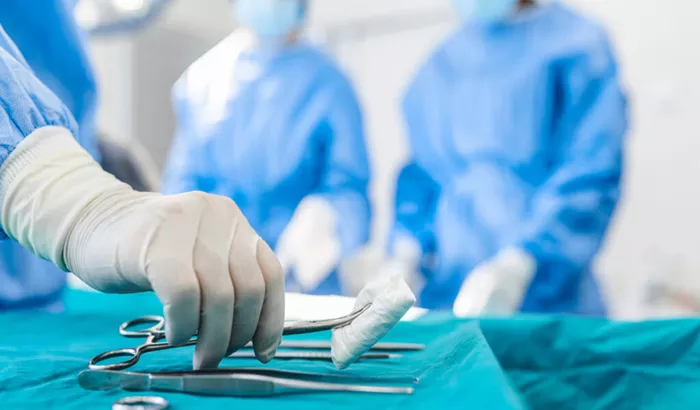Benign prostatic hyperplasia (BPH), a non-cancerous enlargement of the prostate, affects millions of men as they age. While lifestyle changes and medication can help alleviate symptoms, some men may require surgical intervention. In this article, we’ll explore the top 5 surgical procedures for treating BPH, offering insights into each option’s effectiveness, recovery time, and potential risks.
1. Transurethral Resection of the Prostate (TURP)
Overview: TURP is the most common and widely performed surgery for BPH. During the procedure, a surgeon removes excess prostate tissue through the urethra using a special instrument called a resectoscope. This surgery helps relieve pressure on the urethra, improving urinary flow and reducing symptoms.
Effectiveness: TURP is considered the gold standard for BPH surgery, offering long-lasting results with a high success rate. Most patients experience significant symptom relief.
Recovery Time: While recovery varies, most men can return to normal activities within a few weeks, though some may experience mild discomfort for a few days.
Risks: As with any surgery, there are risks involved, including bleeding, infection, and potential damage to surrounding tissues. Some men may also experience retrograde ejaculation, where semen is redirected into the bladder instead of exiting the body.
2. Holmium Laser Enucleation of the Prostate (HoLEP)
Overview: HoLEP uses a laser to remove excess prostate tissue, much like TURP but with advanced technology. A holmium laser is used to vaporize or cut away obstructing prostate tissue, improving urinary function.
Effectiveness: HoLEP has proven highly effective, with long-term symptom relief and low recurrence rates. It is especially useful for men with larger prostates.
Recovery Time: The recovery time for HoLEP is generally shorter than that of TURP, with most men returning to normal activities in about two weeks. The procedure is minimally invasive, which contributes to the quicker recovery.
Risks: While the risks are lower compared to TURP, there are still potential complications, including bleeding, infection, and damage to surrounding tissues. Retrograde ejaculation is also a possibility.
3. Transurethral Incision of the Prostate (TUIP)
Overview: TUIP involves making small incisions in the prostate to relieve pressure on the urethra. Unlike TURP, which removes tissue, TUIP simply opens up the prostate, allowing urine to flow more easily.
Effectiveness: TUIP is effective for men with smaller prostates and can offer substantial symptom relief. It’s a less invasive option compared to TURP.
Recovery Time: Recovery is generally quicker than TURP, with many men resuming normal activities within a few days. However, mild discomfort may persist for a short period.
Risks: The risks are minimal but may include bleeding, infection, and the potential for urinary incontinence. Retrograde ejaculation can also occur in some cases.
4. Simple Prostatectomy
Overview: A simple prostatectomy is typically recommended for men with very large prostates. This procedure involves the complete removal of the prostate tissue obstructing the urethra.
Effectiveness: This is a highly effective treatment for men with advanced BPH who have not responded well to other treatments. It offers long-lasting relief from urinary symptoms.
Recovery Time: Recovery from a prostatectomy can take several weeks. Men will need to rest and avoid strenuous activities during the healing process.
Risks: As with any major surgery, there are higher risks involved, including infection, bleeding, and potential damage to surrounding organs. Men may also experience incontinence or sexual dysfunction post-surgery.
5. Prostate Artery Embolization (PAE)
Overview: Prostate artery embolization is a minimally invasive procedure where a catheter is inserted into the arteries supplying blood to the prostate. Small particles are then released to block the blood flow to the prostate, causing it to shrink.
Effectiveness: PAE is a newer option and is particularly beneficial for men who are not candidates for traditional surgery due to other health conditions. While it offers good symptom relief, it may not be as effective as other procedures in the long term.
Recovery Time: Recovery from PAE is quick, with many men returning to normal activities within a few days. It’s a minimally invasive procedure with less post-surgery pain.
Risks: PAE is associated with a lower risk of complications compared to surgery, but it still carries potential risks, such as infection, bleeding, or damage to surrounding tissues.
Conclusion
The best surgical procedure for BPH will depend on various factors, including prostate size, overall health, and the severity of symptoms. While TURP remains the gold standard, alternative options like HoLEP and PAE provide viable solutions for many men. It’s essential to discuss all available options with a healthcare provider to determine the most suitable approach based on individual circumstances.
FAQs
1. What is the best surgery for BPH?
The best surgery for BPH varies depending on individual circumstances. TURP is the most commonly used procedure, but other options like HoLEP, TUIP, and PAE may be more appropriate for specific cases.
2. How long does it take to recover from BPH surgery?
Recovery time depends on the procedure performed. Generally, men can expect a recovery period of a few weeks, with less invasive options offering a quicker return to normal activities.
3. Are there risks of sexual dysfunction after BPH surgery?
Yes, some BPH surgeries, including TURP and prostatectomy, may result in retrograde ejaculation or, in rare cases, erectile dysfunction. It’s important to discuss potential risks with your doctor before undergoing surgery.
Related topics:
- BPH Symptoms? 4 Solutions To Relieve Discomfort Fast
- The 7 Best Treatment Options For BPH
- Best BPH Medication For Elderly


